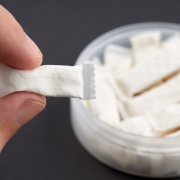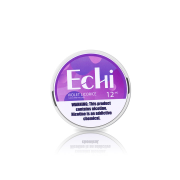Skoal in Bulk: A Strategic Procurement Guide for Corporate Buyers
In today’s expanding nicotine product market, smokeless tobacco remains a steadfast segment with enduring consumer demand. Among the leading brands, Skoal stands out as a premium option known for its consistency, variety, and quality. For corporate buyers—distributors, wholesalers, and private label entrepreneurs—navigating the bulk procurement of Skoal or similar products requires a clear understanding of product distinctions, sourcing strategies, and supplier dynamics. This guide provides a structured overview to help buyers make informed, cost-effective decisions.
1. Understanding Skoal and Its Product Range
Skoal, produced by U.S. Smokeless Tobacco Company, offers a wide array of smokeless tobacco products catering to varied consumer preferences. The brand includes multiple flavor profiles (mint, berry, citrus), cuts (long cut, fine cut, pouch), and strength options, making it a versatile choice for different markets.
Whether you’re supplying retail outlets or building a branded portfolio, understanding these variations is essential. Product selection should align with your target demographics and regional consumption patterns. For example:
-
Skoal Long Cut Mint may appeal more to traditional users in North America.
-
Skoal Pouches are often preferred in regions with increasing demand for discreet tobacco use.
2. How to Purchase Nicotine Products in Bulk
Bulk purchasing of smokeless tobacco or alternative nicotine products involves strategic planning and supplier vetting. Here’s how to get started:
A. Identify Trusted Suppliers
Begin by researching manufacturers or distributors with:
-
Proven track records in the nicotine industry
-
Transparent quality control systems
-
Required certifications for manufacturing and export
Reliable platforms such as Snuff Factory offer access to certified suppliers specializing in smokeless tobacco, liquid nicotine, and other nicotine alternatives.
B. Evaluate Minimum Order Quantity (MOQ)
Suppliers typically set MOQs based on product type and customization level. To reduce risk, look for vendors offering trial orders or sampling programs before full-scale purchasing.
C. Request Documentation
Ensure regulatory compliance by asking for:
-
Product specification sheets
-
Safety data
-
COAs (Certificates of Analysis)
-
Manufacturing licenses
This due diligence helps prevent future customs delays or legal complications.
3. Procurement Channels: China vs. the United States
Procurement processes and market access vary greatly between regions. Understanding these differences is crucial for building a sustainable supply chain.
A. China
-
Advantages: Competitive pricing, extensive OEM/ODM capabilities, fast scalability
-
Challenges: Requires in-depth supplier verification, language barriers, complex international shipping protocols
-
Best for: Buyers seeking private label or customized smokeless tobacco alternatives
B. United States
-
Advantages: Faster domestic delivery, compliance with FDA regulations, trusted quality standards
-
Challenges: Higher cost, longer lead times for custom products
-
Best for: Distributors prioritizing local compliance and reduced regulatory risks
For many buyers, a hybrid sourcing strategy—OEM from China and select SKUs from the U.S.—balances cost and regulatory needs.
4. Cost Composition: Equipment, Raw Materials, and Processing
Understanding the breakdown of production costs is key to managing margins and negotiating supplier contracts.
A. Equipment Costs
If you’re creating your own product line or white label variant, expect initial investment in:
-
Pouch-filling machines
-
Flavor infusion technology
-
Packaging and labeling systems
B. Raw Materials
Skoal and similar products use:
-
High-quality tobacco blends or nicotine bases
-
Flavoring agents
-
Moisture-control preservatives
-
Packaging substrates (foil pouches, cans)
Price variation in raw material sources can significantly affect unit cost, especially at large volumes.
C. Processing and Compliance
Costs here include:
-
Blending and curing
-
Laboratory testing
-
Quality assurance
-
Packaging and distribution
Regions with higher labor standards or regulatory oversight (e.g., the U.S. or EU) tend to carry higher process-related costs.
5. White Label vs. OEM: Which Option Suits Your Business?
Choosing between white label and OEM solutions depends on your business objectives.
White Label
-
Pros: Fast time-to-market, lower startup costs, minimal R&D investment
-
Ideal for: Distributors entering the smokeless tobacco market or testing new SKUs
-
Example: Branding pre-made mint-flavored pouches with your label
OEM (Original Equipment Manufacturer)
-
Pros: Full control over formulation, flavoring, packaging, and branding
-
Ideal for: Established businesses seeking to differentiate in a competitive market
-
Example: Developing a custom blend or flavor unique to your retail brand
Platforms like Snuff Factory offer both models, allowing flexibility based on growth stages or strategic goals.
6. Ordering Process: Samples, Negotiation, and Cooperation
A smooth ordering process sets the tone for long-term supplier relationships. Follow these steps to ensure efficiency and transparency:
Step 1: Initial Contact
Use channels like Snuff Factory’s Contact Page to start discussions. Be clear about product types, quantities, and delivery regions.
Step 2: Sample Request
Before scaling, assess:
-
Product freshness
-
Flavor accuracy
-
Moisture content
-
Consumer usability (pouch size, can design)
Step 3: Terms Negotiation
Clarify:
-
Final pricing (inclusive of shipping and customs)
-
Payment terms (30% deposit, balance upon delivery is common)
-
Delivery lead times
-
Reorder flexibility
Step 4: Place Your Order
Submit a purchase order with documented product specifications. Confirm shipping method (air vs. sea freight) and request a tracking schedule.
Step 5: Build a Long-Term Relationship
Regular follow-up ensures quality consistency and opens the door for better credit terms or co-development opportunities in the future.
Conclusion
Bulk purchasing of Skoal and related smokeless tobacco products offers solid profit potential for corporate buyers who approach it with strategic insight. From understanding the nuances of Skoal’s product line to selecting between white label and OEM solutions, each step of the procurement journey influences your market success.
As the nicotine sector continues to diversify, choosing the right supplier and structuring your sourcing model effectively will ensure your brand remains competitive and compliant. Platforms like Snuff Factory streamline the process, providing a one-stop solution for sourcing, sampling, and scaling.
Ready to elevate your nicotine product portfolio? Start sourcing with confidence—today.












Leave a Reply
Want to join the discussion?Feel free to contribute!